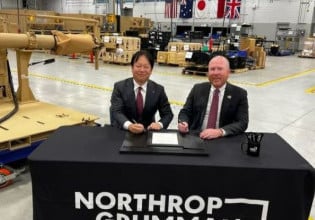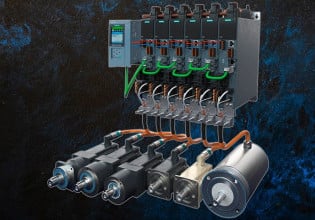Advantech Launches Ruggedized Edge AI System for Heavy Industry Applications
Advantech has released its latest industrial computer, which brings AI to in-vehicle use, improving equipment safety and efficiency. The new edge AI system is designed to withstand harsh environments in heavy industries.
Advantech's newest industrial computer, the MIC-715-OX, is designed for some of the most rugged conditions that electronic devices could encounter. It is built for mobile applications and will be used in large industrial equipment in construction, mining, drilling, and other heavy applications.

The Advantech MIC-715-OX is built for in-vehicle use in heavy machinery. Image used courtesy of Adobe Stock
Heavy Industry Challenges
Mobile industrial equipment processing and control is an important part of multiple heavy industry operations, including petroleum and natural gas drilling, construction, mining, scrap yards, and port operations. These types of environments are especially rough on electronics. Rough roads with vibration, dust, occasional water spray, grease, airborne contaminants, and other environmental hazards can lead to early failure.
Furthermore, these environments often create numerous safety challenges for safe vehicle operation. Ports and scrap yards are typically surrounded by pitching ships, moving freight cars, and other heavy equipment. Construction, mining, and drilling operations may have other equipment nearby but also operate on uneven surfaces. All of these machines operate in all weather conditions, varying lighting conditions, and around personnel who may be hard to see.
The MIC-715-OX Edge AI System
The MIC-715-OX ruggedized edge AI system has been developed for just such a set of challenges. Its ruggedized case dampens vibrations and mechanical shock. It is also ingress protection (IP) rated to 67, meaning water and dust penetration is prevented. The fanless design keeps the module cool in all weather without the need to bring outside contaminated air into the case.
Another key feature is that the MIC-715-OX has locking connectors. Many standard connectors are designed for stationary use, and a slight mechanical shock or vibration can cause them to disconnect. Is there much worse than using a computer and having someone unplug it? The MIC-715-OX uses locking power cables to prevent such an issue.
Also, the ignition switch to the vehicle can be connected to the computer, limiting access to the vehicle and preventing unauthorized use, either by unauthorized people or in an unsafe manner, such as bypassing safety features that can be programmed into the computer.

Advantech’s MIC-715-OX (pictured above) is powered by the NVIDIA Jetson Orin NX module. Image used courtesy of Advantech
Computing Power and Interfacing
Besides being rugged and tough, the MIC-715-OX is built on the powerful NVIDIA Jetson Orin NX system-on-a-chip platform. This system can perform at speeds up to 3.0 GHz using eight 64-bit ARM Cortex A78AE processors and a 1024-core Ampere GPU. It will support up to 16 GB of LPDDR5 RAM and store data on a solid-state hard drive.
There are multiple ways to interface the system, including six Ethernet ports, two USB 3.0 ports, and an HDMI port for an operator's display. Four of the six Ethernet ports support Power over Ethernet (PoE), reducing the wiring and troubleshooting complexity often encountered when dealing with camera and sensor suites.
Overall, the computing power is supportive of AI algorithm development. AI onboard a vehicle can help determine safe operating practices, such as driving on uneven slopes, load management, and object or personnel detection.
Edge AI in Harsh Environments
A capable industrial computer that can withstand the harsh conditions of in-vehicle use will mean fewer unplanned shutdowns and better operator safety. The ability to interface multiple cameras and sensors and leverage AI capabilities will eventually lead to obstacle detection and other such algorithms that will ultimately save lives.






